- 1031ENG-N Civil Engineering Construction Technology In-Course Assessment (ICA) Group Report | Teesside University (TU)
- MOD009382 Finance and Governance in Health and Social Care 011 Assessment Coursework Report | Anglia Ruskin University
- Geotechnical Engineering Assignment 2025/26 – University Of Surrey (UniS)
- Essentials of Adult Nursing Summative Assessment – University of Roehampton London (UoRL)
- BMP3006 Practical Digital Marketing Assessment 1 Individual Written Portfolio September 2025 – Regent College London
- CIPD_5HR03_24_01 5HR03 Reward for Performance and Contribution Level 5 Associate Diploma Learner Assessment Brief – Chartered Institute of Personnel and Development
- AF6010/LD6041 Strategic Management Accounting Assessment Brief AY2026 – Northumbria University Newcastle (NUN)
- AB1 Lead Practice to Support Safeguarding of CYP & Harm & Abuse NVQ Level 5 Diploma Unit 4 and Unit 8 Activity Assignment Brief, Cambridge Management and Leadership School (CMLS)
- BTEC Unit 4: Leadership and Management Assignment Brief 1 2025-26, City of London College
- Culinary Arts Management (chef) Assignment Social Science Research Proposal , University College Birmingham (UCB)
- Unit 4002 Engineering Mathematics (A/651/0708) Assignment Brief 2025-2026, Barnsley College (BC)
- Nutrient Diploma Course Assessment 2025-26, The College of Naturopathic Medicine
- Unit 3 Management of Human Resources Pearson BTEC Diploma Assignment Brief 2025-2026 – Lyceum Campus UK
- NAM4034 Fundamental skills for Nursing Written Care Plan CW1 Assignment Brief Academic Year 2025-26, Buckinghamshire New University (BNU)
- Unit 5006 Further Mathematics – Pearson BTEC Level 5 Diploma Assignment 2025-2026, Leeds City College
- BIT4213 Fundamental of Cryptography Individual Assignment 1 – Understanding Cryptographic Techniques
- WNI077 Nutrition and Digestion Graded Assignment 2 Brief : Access to HE Diploma – Health and Social Care
- FDY3003 Exploring the Social World Assignment Essay – Arden University UK
- Mechanical Engineering Assessment: Design and Development of an Aerodynamics Package
- 7CO04 Business Research in People Practice Learner Assessment Brief
H/615/3824 Communication for Health and Social Care Assignment – Level 3 diploma in Health and Social Care
| University | Inspire London College (ILC) |
| Subject | Communication for Health and Social Care |
| Statement Of Authenticity | |
| Learner’s Declaration I certify that the work submitted for this assignment is my own and any similarity is within the range of Turnitin 15%. I have clearly followed Harvard referencing and acknowledged any sources or other research in my coursework including Charts/Diagrams/Tables and such. I understand that a false declaration is a form of malpractice and subject to penalty. In case the plagiarism detected is above 15% in my work, the management has all the right to cancel my assignment and take appropriate action against me. I also permit the management to share all evidence and course work submitted by me to the concern. I also undertake that I have not used proscribed websites such as: ukessays.com studymode.com, scribd.com, Wikipedia.com, slideshare.net, my.assignmentshelp.com,www.bestessaywriters.com, kbglobal.co.uk,ChatGPT etc. for my coursework. | |
| Learner’s Full Name | Dale Lipska |
| Signature | |
| Date | 28/09/2025 |
Do You Need Assignment of This Question
Task 1
1.1: Describe the methods used to communicate in health and social care
Communication allows healthcare professionals (doctors, nurses, surgeons, allied health staff and carers) and decision-making to be collaborative as well as ensuring that patients and their families are informed and involved in decision-making. Communication is possible in various forms and they are verbal, nonverbal, written, formal and informal (Sharkiya, 2023; Crimlisk et al., 2022). Verbal communication is a type of communication with the use of words spoken, and is possible when talking to a doctor about a course of treatment, a nurse about a course of action when performing a surgical operation, or a multidisciplinary team about observations during a handover. Another type of communication, which is quite significant, is nonverbal, and it can also involve eye contact, gestures, facial expressions, tonal voice and posture (Gheshlagh et al., 2024).
1.2: Discuss the strengths and weaknesses of both formal and informal communication methods.
Formal communication adopted and leads to reliability of interaction which especially significant for legal accountability. It implies that things are done similarly and that critical fact is not disrespected. On the other hand, informal communication is more rapid and can be more emotionally helpful. It enables the health professionals to provide and obtain feedback, establish trust with patients, and make communication more human (Zou et al., 2025). However, its informality may also pose dangers, including being misunderstood, spreading rumors or lack of reliability especially due to the lack of written record.
1.3: Outline the principles of effective communication.
The concepts of effective communication play a vital role in the delivery of messages in the right way and manner. Among the most famous models is the “7 Cs of Communication” that underline courtesy, clarity, conciseness, completeness, correctness, concreteness and credibility. Courtesy is the act of respecting and being considerate of patients and other colleagues. Clarity deals with the utilization of simple, easy to understand language, it does not use jargons unless it is essential (Coyne et al., 2025). There is brevity which makes the communication straight forward without adding unrelated information to the listener. Completeness is important because all the necessary information should be used in order to make sure that recipients comprehend the message well.
1.4: Explain potential barriers and how they can be overcome.
Although the intentions may be good, barriers to communication tend to disrupt effective communication in health and social care. Perceptual barriers can arise when the people receive the information in the wrong way, and that is mostly determined by personal prejudices which can be resolved by listening and empathy. There is also a problem of language barrier especially in cases where the patients fail to comprehend medical terminologies or where English is not their native language. They can be minimized through the use of the plain language or the hiring of interpreters (Crimlisk et al., 2022). Hierarchical culture or disrespect may prevent staffs to speak up; however, inclusivity and hierarchies can be encouraged by promoting flattening hierarchies. In some instances, the emotional barriers e.g. anxiety, fear or stress will be a hindrance to the patients expressing themselves freely, development of trust and reassurance is necessary in such situations.
Buy Answer of This Assessment & Raise Your Grades
Task 2
2.1: Discuss the different methods of oral and written communication found commonly in health and social care.
The health and social care communication has various forms based on the context. Oral communication is often adopted in consultation, team briefings, counselling sessions and handovers and assists professionals in comprehending patient needs, engage them in decision making and reassure. Eye contact, open body language, nodding or signs of support in nonverbal communication is important in building trust especially in cases where a patient is nervous or has difficulty in verbal communication. Another factor that is significant in maintaining accuracy and accountability is written communication (Pharm et al., 2021; Seerig et al., 2024)..
2.2: Produce an oral presentation and deliver to an audience at appropriate level. Presentations on oral presentations are widely utilized to share knowledge, train the staff or short-term teams regarding work with patients. In order to have an effective presentation, preparation is essential. The presenter should know the audience and the subject matter, to plan what he will say in his presentation logically and have visual aids ready in case of need. They should also be delivered with clarity and the right volume and tone without a monotonous reading style (Howick et al., 2024; Tahsin et al., 2023). Eye contact and involvement of the audience are the keys to keeping the interest.
2.3: Produce a written communication that is appropriate for your organisational role
To: Care Manager
Name of the subject: Resident Mr. Jones Observation Report.
Dear
I am addressing you to give an update on Mr. Jones who is one of the residents under my care.
I noticed that Mr. Jones seemed lost and inattentive during the evening round on the 15th July.
He had some abnormal behaviour such as inability to answer questions and restlessness. I made sure that he was constantly observed during the night and recorded all the observations in his care record. These observations suggest that I would advise the review of his current medication and the follow-up with his GP to guarantee his safety and wellbeing. I can be contacted to give additional information or help in coordinating the review in case of need. Kind regards, Care Support Worker
Task 3
3.1: Discuss the benefits and potential hazards of using technology in communications for organisations.
ICT has altered the communication process within the health and social care. It also facilitates the utilization of the electronic health records, telemediation, online consultations and digital care coordination and sharing of reports. ICT also enhances efficiency as less paperwork duplication is done and the accuracy of data is increased, which saves time and costs. It also supports continuity of care since it allows various medical practitioners to update and access the same patient records in real time (Gheshlagh et al., 2024; Zhu et al., 2024).. Patient portals and mobile applications are some tools that enable patients to interact with their care and track their health and learning materials.
3.2: Discuss the benefits and potential hazards of using technology in communications for service users
The gains that are accredited to ICT are broad. Telehealth enables patients to have easier access to healthcare even in rural setting. Almost real-time sharing of reports and test results can result in the faster treatment decision. It enhances coordination among teams and also decreases the
workloads of the administration. ICT is, however, associated with risks. Among the most dangerous concerns are privacy violations and unauthorized access of data.
3.3: Explain the issues around data protection and how it is implemented in health and social care
Data about patients is a legal and ethical concern in health and social care. The health services are to be in line with the laws, including the General Data Protection Regulation (GDPR), that regulates the usage, storage and sharing of personal information. The violation should be reported in these frameworks within rigid time frames and patients should have rights to their information such as access and correction. The mitigation strategies consist of encryption, access control, multi-factor authentication, and training the personnel to be aware of the risks of data protection. With the use of these tips, healthcare providers are able to uphold confidentiality and establish trust with the patients and prevent severe legal or financial repercussions (Pharm et al., 2021).
Are You Looking for Answer of This Assignment or Essay
Many students struggle with H/615/3824 communication for health and social care assignments because they involve understanding communication methods, barriers, and professional reports. If you find tasks like oral and written communication, effective teamwork, or data protection challenging, expert help can save you time and stress. Our UK experts at Students Assignment Help provide human-written, AI-free, plagiarism-free diploma assignment help. For reliable support across Health and Social Care units, explore our expert assignment help UK today.




